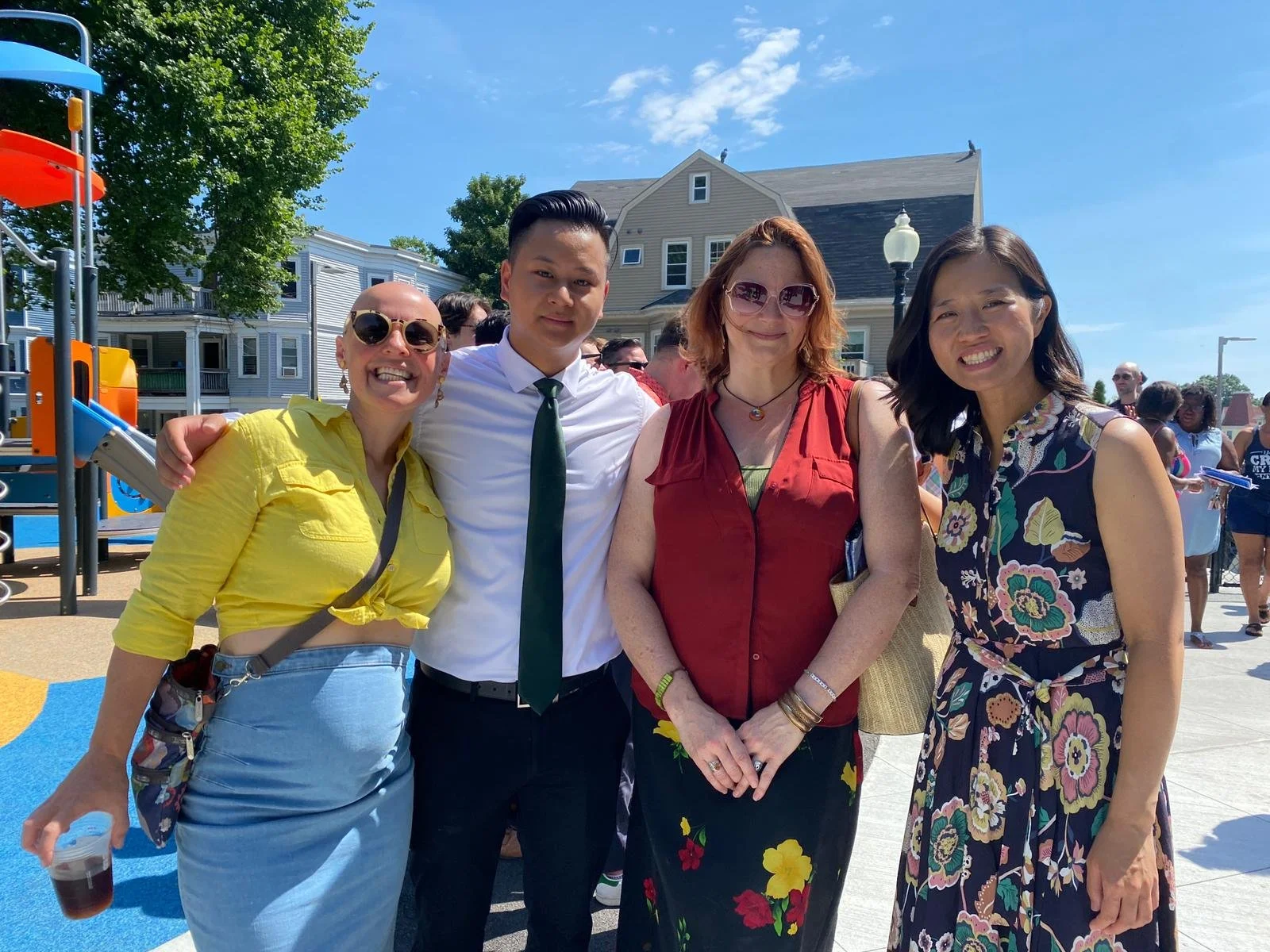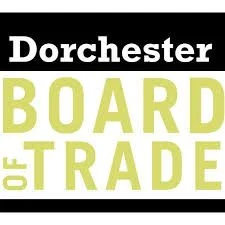
Our Mission
Our mission is to cultivate Greater Ashmont as an attractive, thriving, and connected neighborhood through our work as a responsive nonprofit organization.
We strive to maintain a welcoming streetscape that encourages foot traffic, promote a diverse business mix that supports a vibrant local economy, and host events that foster relationships and encourage collaboration across our community. We are guided by both data and community feedback to ensure we remain responsive to the needs of our district.
We look forward to working with all of you to keep our neighborhood strong and vibrant. If you would like to get involved in Greater Ashmont MS, please consider joining one of our committees or otherwise volunteering!

Our Team
Elle Marrone
EXECUTIVE DIRECTOR
Elle Marrone serves as Executive Director of Greater Ashmont. She is an entrepreneur and artist and takes a creative approach to supporting small businesses and the greater community.
Crystal-Grace Sketers
PROGRAMS FACILITATOR
Crystal-Grace Sketers has been a Dot resident for 6 years and has spent a good portion of that time getting to know folks through community-based employment, enjoying local business offerings, volunteering and being parent to a teenager. Bringing varied backgrounds in childhood education and care, vocal performance, stage work and costuming, restaurant/ live music industry, gardening, volunteering, writing and administrative support together into this role, she is excited for the opportunity to build further connections with residents, businesses and organizations across the community. You are likely to find her visiting local restaurants, catching live music and theatre shows, 'hiking' through our local neighborhoods and natural enclaves, and reading books from Little Free Libraries
Our Board
-
Beth Anderson
BOARD TREASURER
-
JP Charboneau
BOARD VICE PRESIDENT
-
Jeremy Colon
BOARD MEMBER
-
Michaela Flatley
BOARD PRESIDENT
-
Leslie MacKinnon
BOARD MEMBER
-
Jermaine Malcolm
BOARD MEMBER
-
Stephanie Moura
BOARD MEMBER
-
Myesha Slaughter
BOARD MEMBER
-
Ben Stone
BOARD MEMBER
-
Mike Wilson
ADVISORY BOARD
Main Streets America
Main Streets America districts follow a four-point comprehensive approach that creates and sustains the district’s image: 1) community organization, 2) promotion, 3) design and 4) economic vitality. Specific Main Street activities and operations include storefront improvement grants, public enhancements, local promotional and fund-raising events such as road races, parades, auctions, multi-cultural festivals, and holiday shopping events, all of which strategically aim to enhance the image of the business district and attract consumers.
Boston Main Streets Program
Boston Main Streets brings the technical knowledge of business district revitalization to twenty Boston business districts, including six in Dorchester (Bowdoin Geneva, Fields Corner, Four Corners, Greater Ashmont, Grove Hall, and Uphams Corner). The network of 20 independent nonprofit Main Streets organizations exists across Boston. Main Streets use a comprehensive revitalization approach. We want to create, build, and sustain healthy commercial districts.
Our Affiliations
History of GAMS
Greater Ashmont Main Street was designated as one of Boston’s Main Street Districts in the summer of 1999. It was originally called St. Mark’s Area Main Street, but went through a formal re-branding process starting in 2014, including the organizational name change, which became final in 2016. Our commercial district includes more than 130 businesses in almost 400,000 square feet of commercial and institutional space, and serves more than 30,000 residents, workers and commuters.
History of the District
Dorchester Avenue, the nearly straight line that runs from Lower Mills to the bridge over Fort Point Channel, was created as a turnpike by the Dorchester Turnpike Corporation, created by an act of the Massachusetts legislature in 1805. It became a free road in 1854 that was used in the late 19th and early 20th centuries for streetcar traffic, first horse cars and later electric trolley cars. Centre Street is the descendant of an early Indian trail; Ashmont Street was introduced in 1849, and Melville Avenue in 1869.
The real impetus for growth in the area at the south of the district was the introduction of the Shawmut Branch Railroad in 1872. The area near Ashmont grew from the activity at the train station and the construction of Jacques and Griffin’s Market (now O’Brien’s) in 1884. The nearby residential neighborhoods began to grow, and the Square grew with the construction of The Hotel Argyle (1882-92), the Ashmont Block (1892), All Saints Church (1892-94), Peabody Square Park (1893), the Fire House (1895), and the Peabody apartment building (1895-96).
The northern stretch of the district, from Welles Avenue to Melville Avenue, was influenced mostly by institutional development during the second half of the 19th century and the beginning of the 20th. The Industrial School for Girls opened their building in 1859; the second high school soon followed in the late 1870s; Christ Church Unitarian opened about 1890; and St. Mark’s Parish, Roman Catholic, was set off from St. Gregory’s in 1905. St. Mark’s first occupied a wooden building, but by 1914 Charles Brigham was commissioned to design a brick church building.
From Mercier Avenue at the south to Melville Avenue at the north, as the residential population grew by leaps and bounds from the 1870s to the 1920s, the commercial district along the sides of Dorchester avenue added small commercial buildings as larger tracts of land were broken up. Livery stables and greenhouses gave way to stores, offices and service businesses in one-story buildings or in small mixed-use properties.
When Barbara Bean, Father Dan Finn and Andrea Sheppard Lomba lead the charge to establish a Main Street district to cover the area from the southern boundary of the Field’s Corner district to Mercier Avenue, the group recognized the nearly continuous commercial presence along Dorchester Avenue which laid the foundations for what would become Greater Ashmont Main Street.











